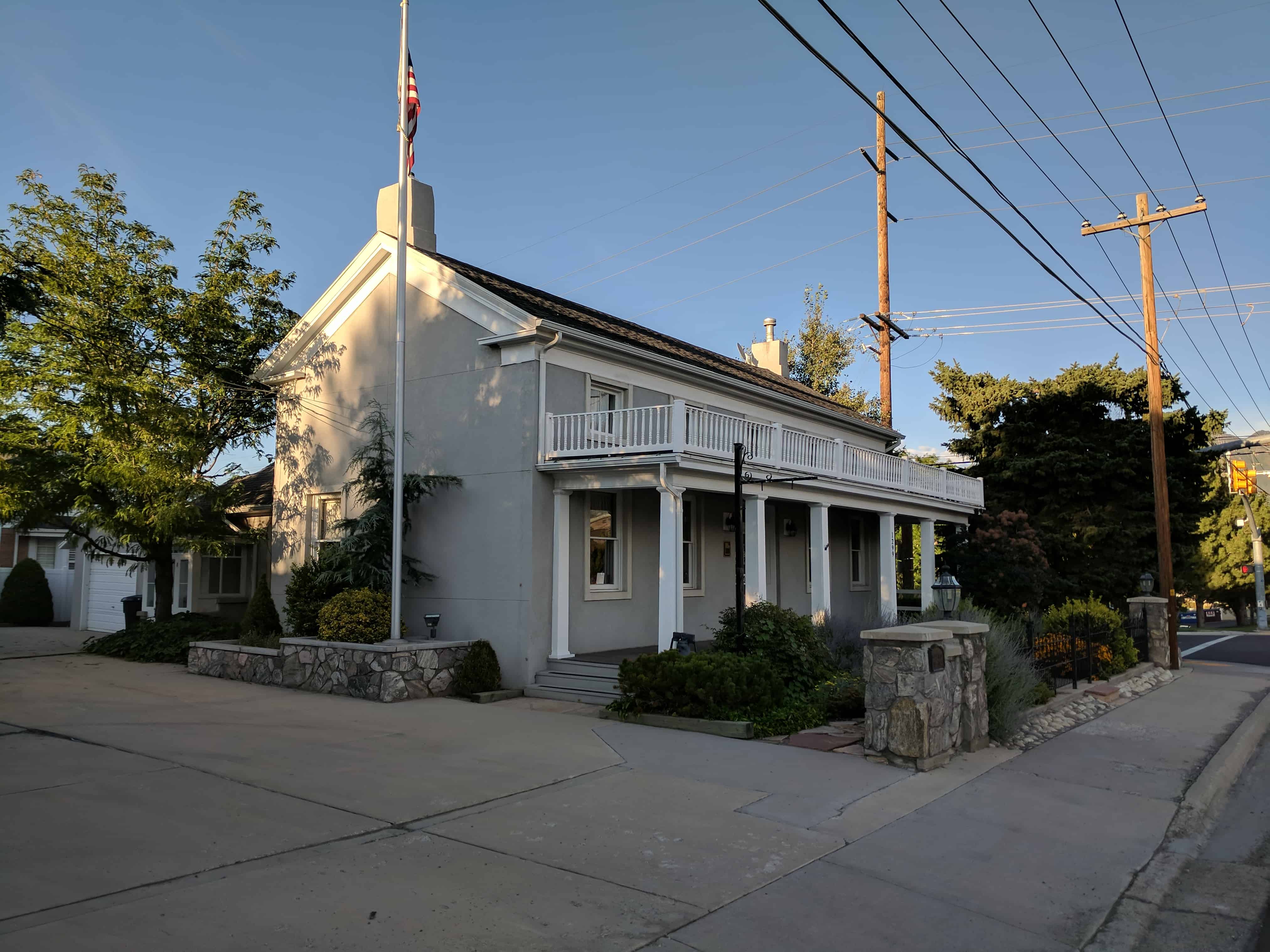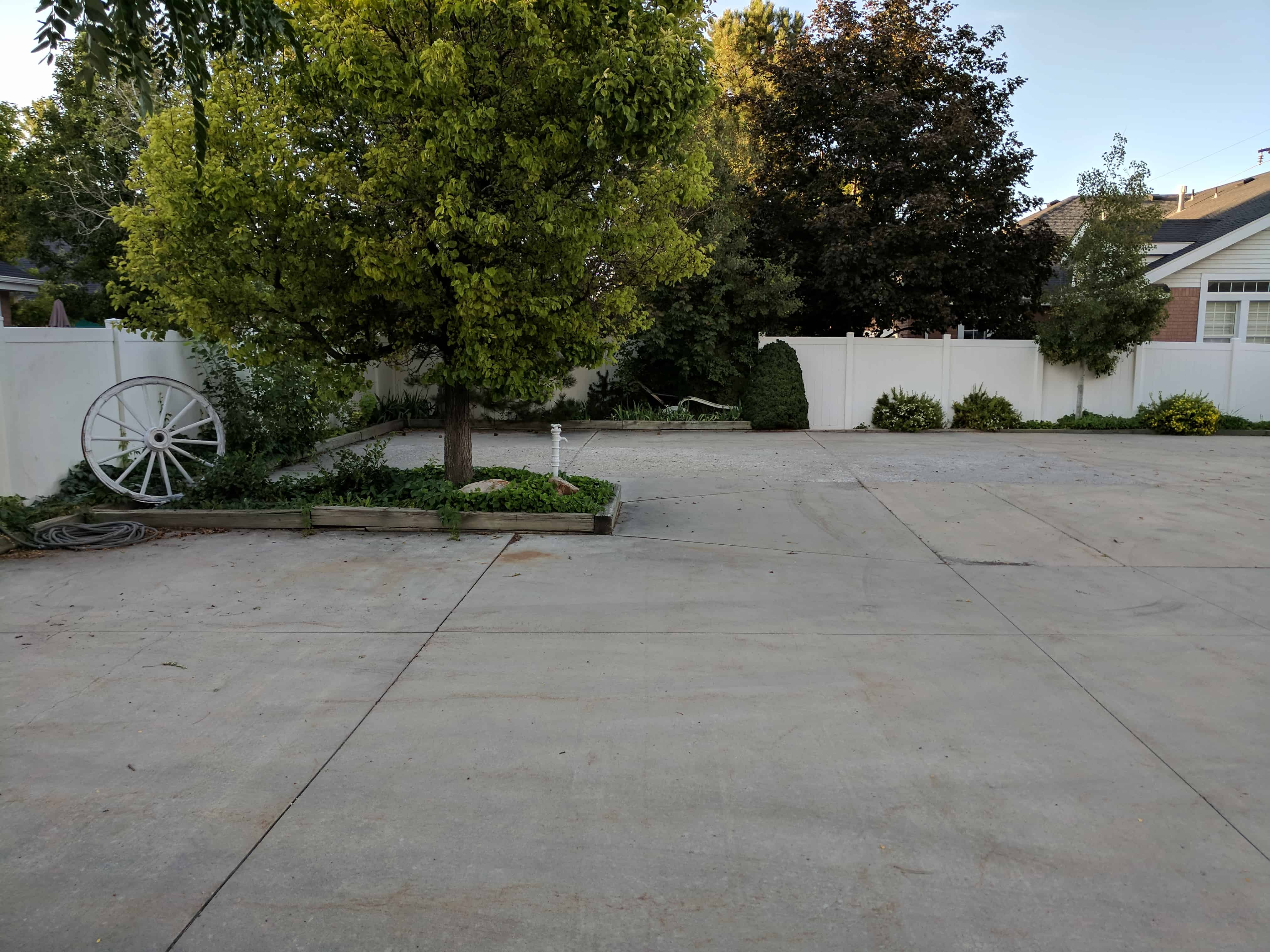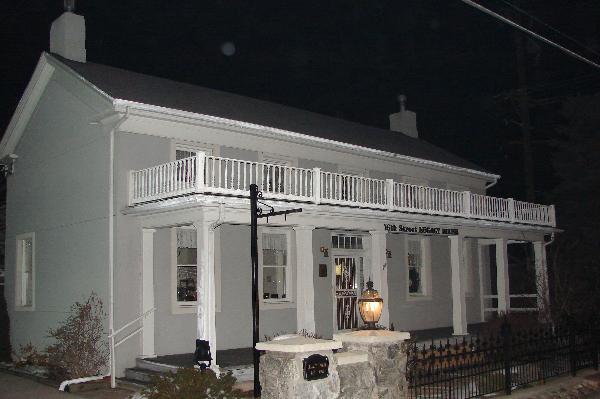
(Thanks to Lyndsay Jones Pitbladdo for sending me this.)
Edward Pugh Home
16th Street Legacy House
Construction began December 1862. Built of stucco adobe by Edward Pugh, an 1853 Pioneer to Utah. Patterned after Brigham Young’s Beehive House.
Located at 1299 East 4500 South in Millcreek, Utah – this home was added to the National Register of Historic Places (#78002680) on August 31, 1978.









The Edward Pugh House is significant as one of the earliest remaining pioneer houses constructed in the Salt Lake Valley. Architecturally, the house is patterned after Brigham Young’s Beehive House, completed in 1854. Like the Beehive House, the Edward Pugh House is also constructed of stuccoed adobe. The lives of Edward Pugh and his two wives, Mary and Elizabeth, which are inseparably associated with the house, offers an interesting and informative glance into some of the social problems as Mormonism developed on the American frontier.
Edward Pugh was born in Stratford, Herefordshire, England, August 28, 1824. He learned from his father, Edward Pugh, Sr., farming and masonry, two trades that served him well after he arrived in Utah in 1853.
In June 1842, Edward and his older sister, Mary, joined the Mormon church much to the disappointment of their parents who instructed them not to return home until they gave up this new religion. However, the conversion of Edward and Mary was unshakable and they both worked for one year to raise money to sail to the United States in 1843. Edward followed a year later and joined the main body of the Mormons in Illinois.
Following the exodus from Illinois, Edward Pugh was sent to Kanesville, Iowa where on July 24, 1847, he married Mary Ann Rock Williams Pugh. According to family sources the marriage was one of convenience and had been consumated at the suggestion of Brigham Young. Mary Ann was a widow with three children and one on the way. She was twelve years older than Edward but was also from near Edward’s home in Herefordshire, England.
Edward remained in Iowa until 1853 when they journeyed to Utah in the Henry Ettleman Company, arriving on October 1, 1853. Edward was directed to south Salt Lake Valley where his sister Mary and her husband had already settled. He acquired a rectangular plot of ground for a farm which stretched west from present day 13th East Street to 17th East Street and south from 4000 South Street to 4700 South Street. A log cabin was constructed adjacent to the present house near the southwest corner of the property at 13th East St. and 4500 South St.
On April 19, 1861, Edward left for England where he served as a missionary until April 23, 1862 when he began the return journey to Utah. While returning to Utah, he visited Chicago and purchased a threshing machine and a span of black mares which were used to pull the machine to Utah. The machine was reported to be the first threshing machine brought to Utah and Edward was kept busy threshing wheat for fanners in Salt Lake, Utah and Tooele valleys. In December 1852, construction on the present house was begun and completed in 1863. The new house was evidence not only of Edward Pugh’s skill as a mason, but also the degree of prosperity he had achieved through his dairy farm and threshing activities.
Another sign of Edward Pugh’s success in Utah was his decision to take a second wife. On May 5, 1866, he married seventeen year old Elizabeth Kelley, who he had first met four years earlier as he journeyed with the Kelley family from England back to Utah.
An apartment was prepared for Elizabeth in the log cabin located to the rear of the stuccoed adobe house occupied by Mary. The triangle relationship soon led to conflict as Mary resented the beautiful, young Elizabeth, thirty-seven years her junior. The strong-willed Elizabeth resented the apparent attempts at domination by the older first wife; and Edward, disappointed that his relationship with Mary had produced no children of his own and which if it had, according to Mormon Theology, would be the eternal offspring of Mary and her first husband, was concerned with the fulfillment of a promise by John Smith, brother of the prophet Joseph Smith, that Edward’s descendants would number into the thousands.”
Edward and Elizabeth’s first child, a boy, which they named Edward Kelley Pugh, was born April 18, 1868. In the fall of 1868, Edward Pugh was called to help establish settlements in the southern part of the state. Preparations were made and in November 1870, Edward and Elizabeth with their two children, began the journey to the newly founded settlement of Kanab, 300 miles south of Salt Lake City. Mary, who was near fifty-eight, chose to remain at the Salt Lake home where she died in 1895.
Edward Pugh played an important role in the history of Kanab. As a mason, he helped construct many of the buildings in the community and as an experienced farmer, he was important in the economic development of the region including Kanab’s United Order. Edward died in Kanab on September 14, 1900. The ten children born to Edward and Elizabeth and his descendants are now numbering close to the thousands promised by John Smith in 1844.
In May, 1872, a year and a half after Edward Pugh moved to Kanab, Enoch Pugh, the son born shortly after the marriage of Edward and Mary in Kanesville, Iowa, married Harriet Hughes and moved into the 1862 house where he continued to operate the farm and take care of his mother.
Enoch had worked closely with his father since childhood and following the death of Mary in 1895, acquired full title to the dairy. He died May 20, 1920 at which time his two sons, Bryon and Willard took over the operation of the farm. Willard lived in the house and cared for his mother, Harriet, until her death in 1935. Five years later, in 1940, Willard married Merle Irene Jackson Pugh, the present owner of the house. Willard Pugh died in 1965.








my father grew up in this home his mother was a Pugh my name is B
Boyce and i have his grandson of ten years old Jennifer lee Boyce my father was Paul C,Boyce
Jennifer, who lives there now? I am descended from Mary Ann (her first husband Benjamin), and I would love to find a history on this house.
Jennifer, I’m a descendent of Mary Ann’s second husband, Stephen Nixon, though my line was raised by the third line (Edward). The home has been occupied by businesses for a while now. Don’t remember who is there now. I grew up with that same painting hanging in my home.